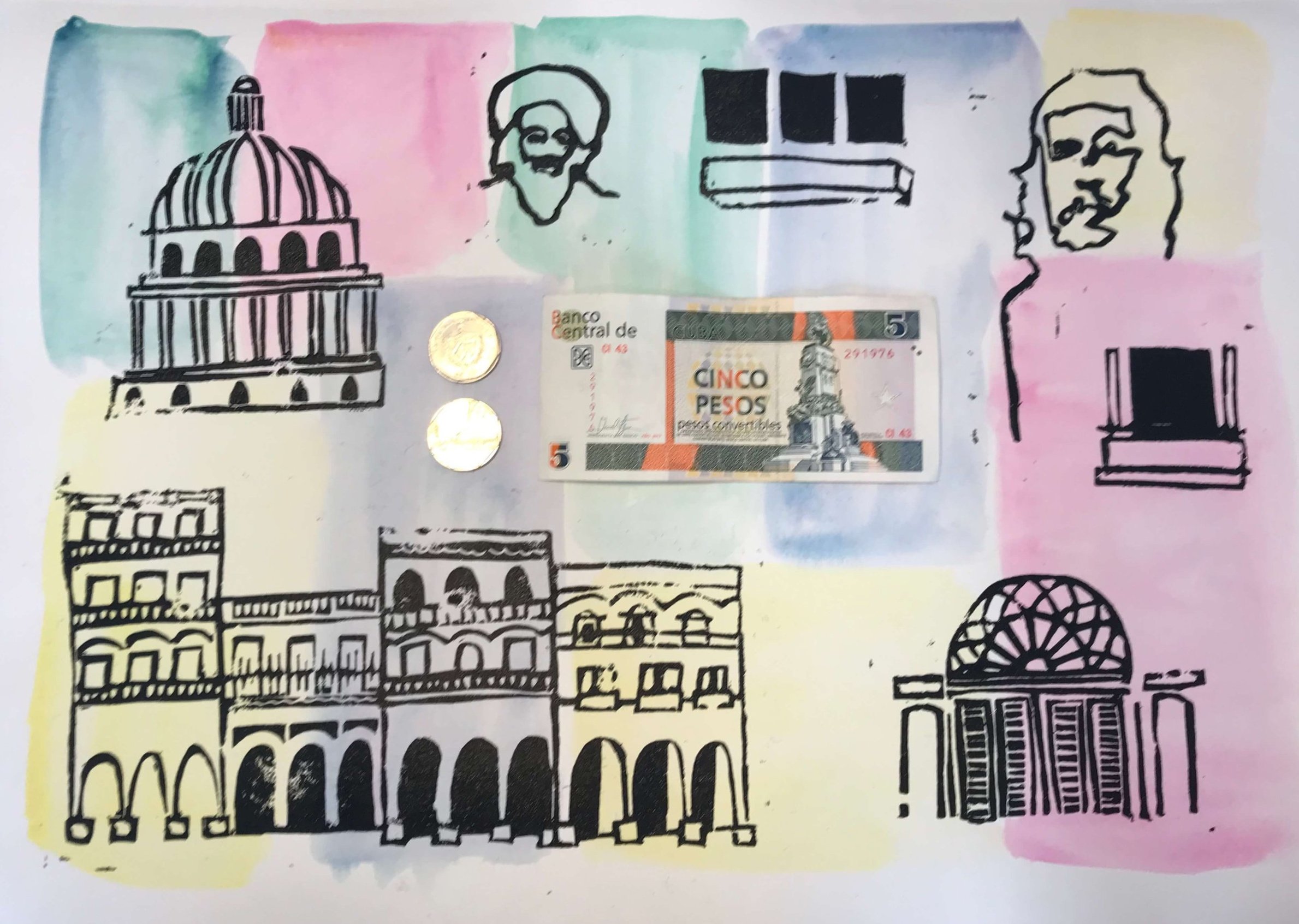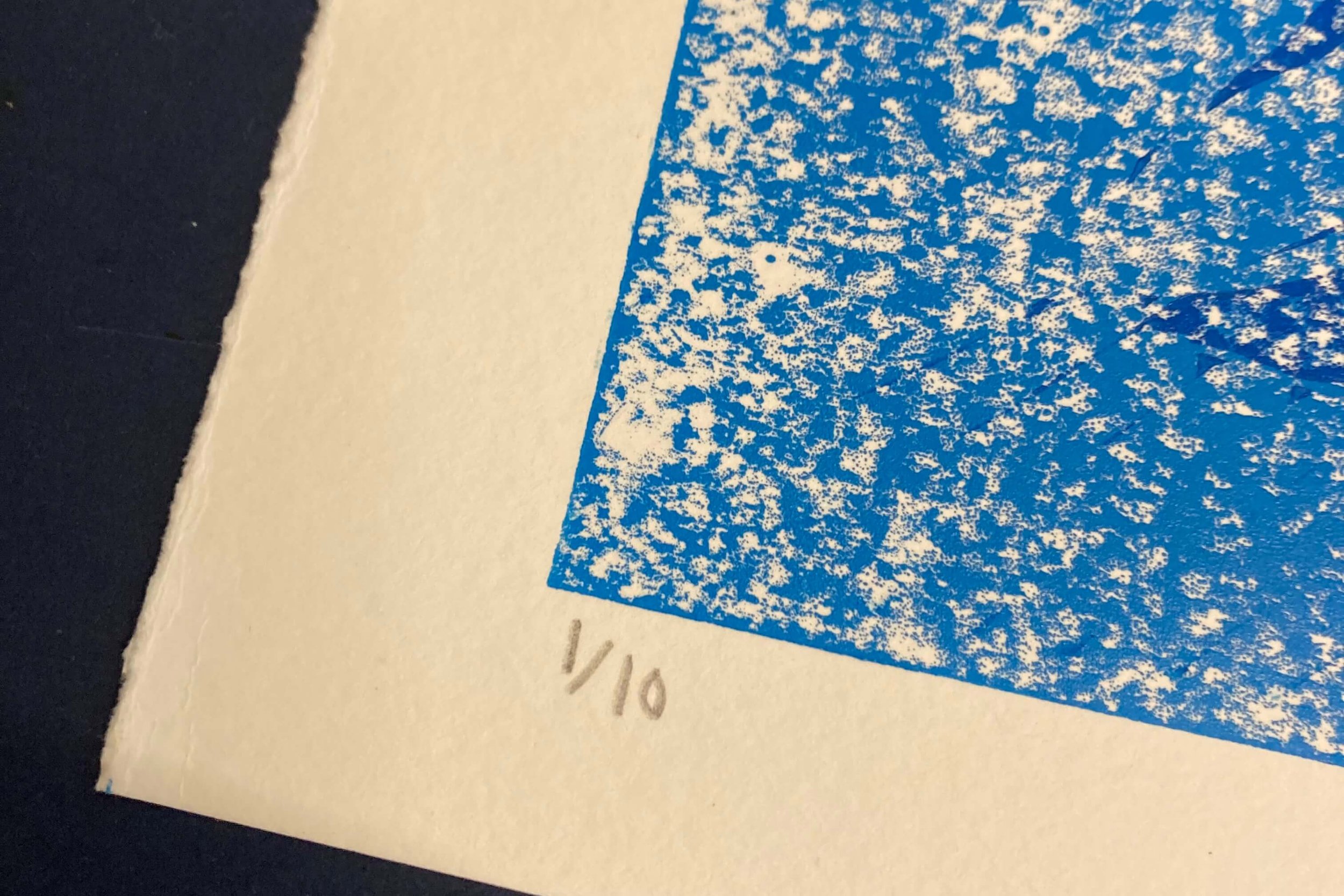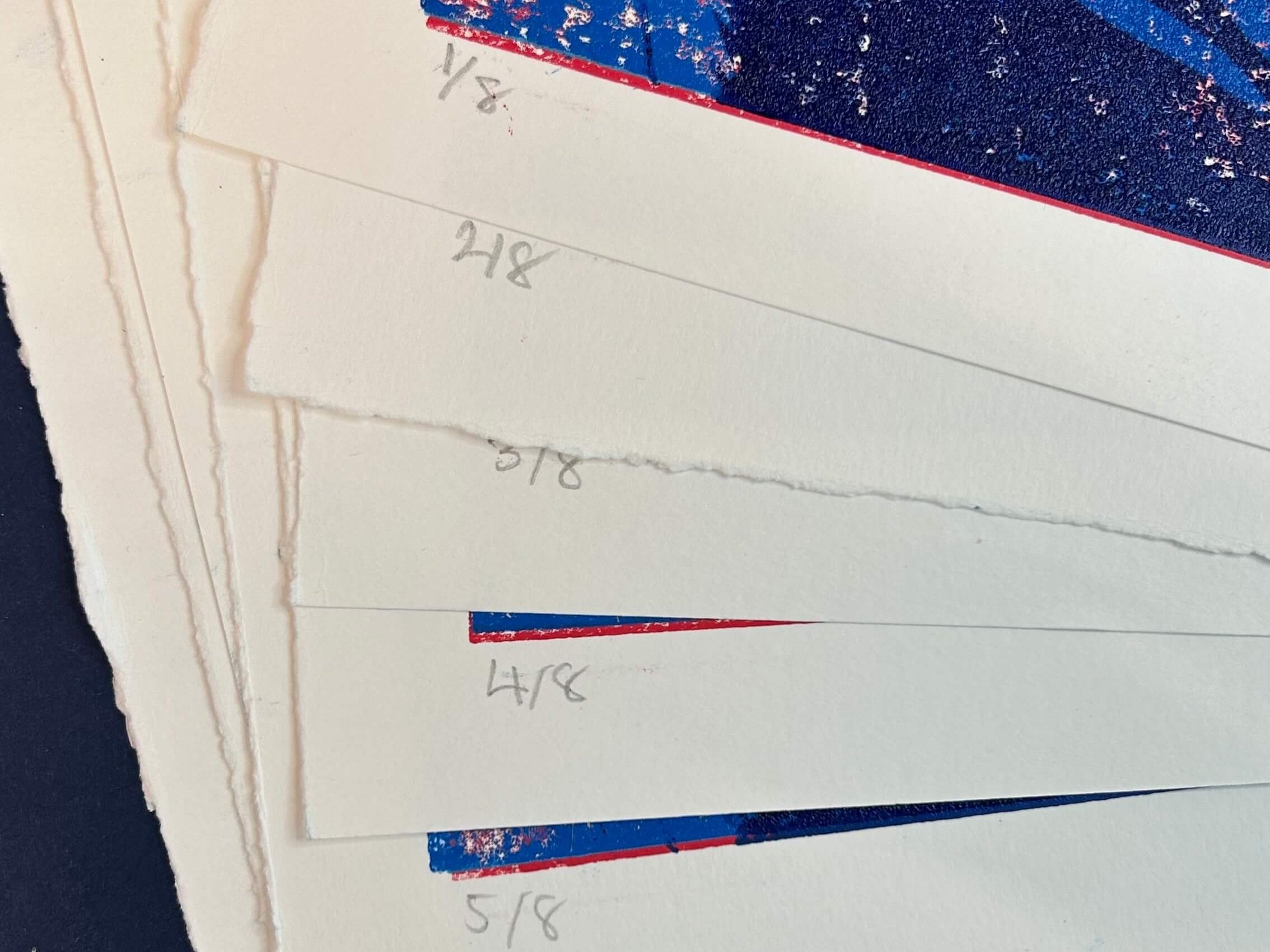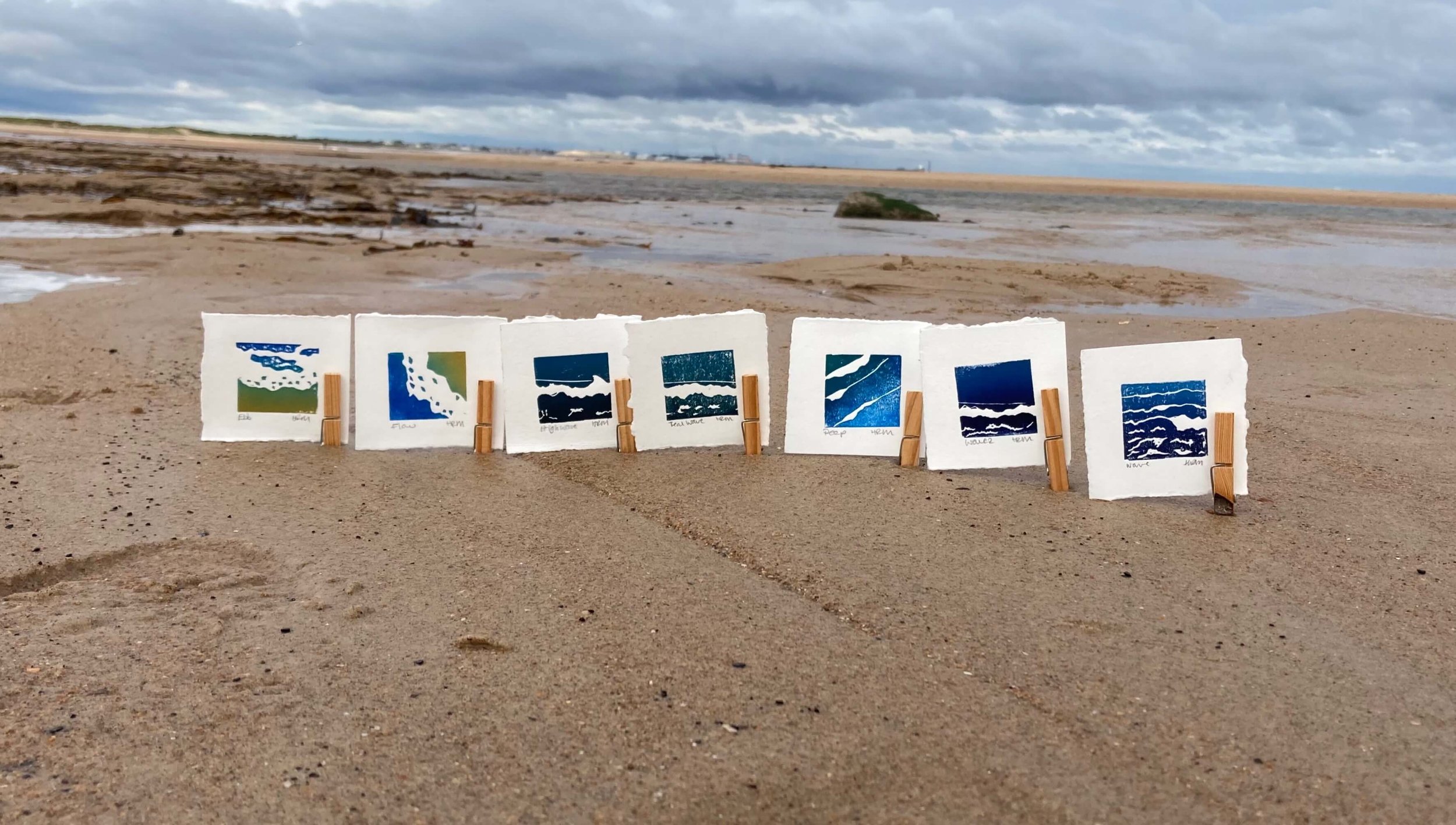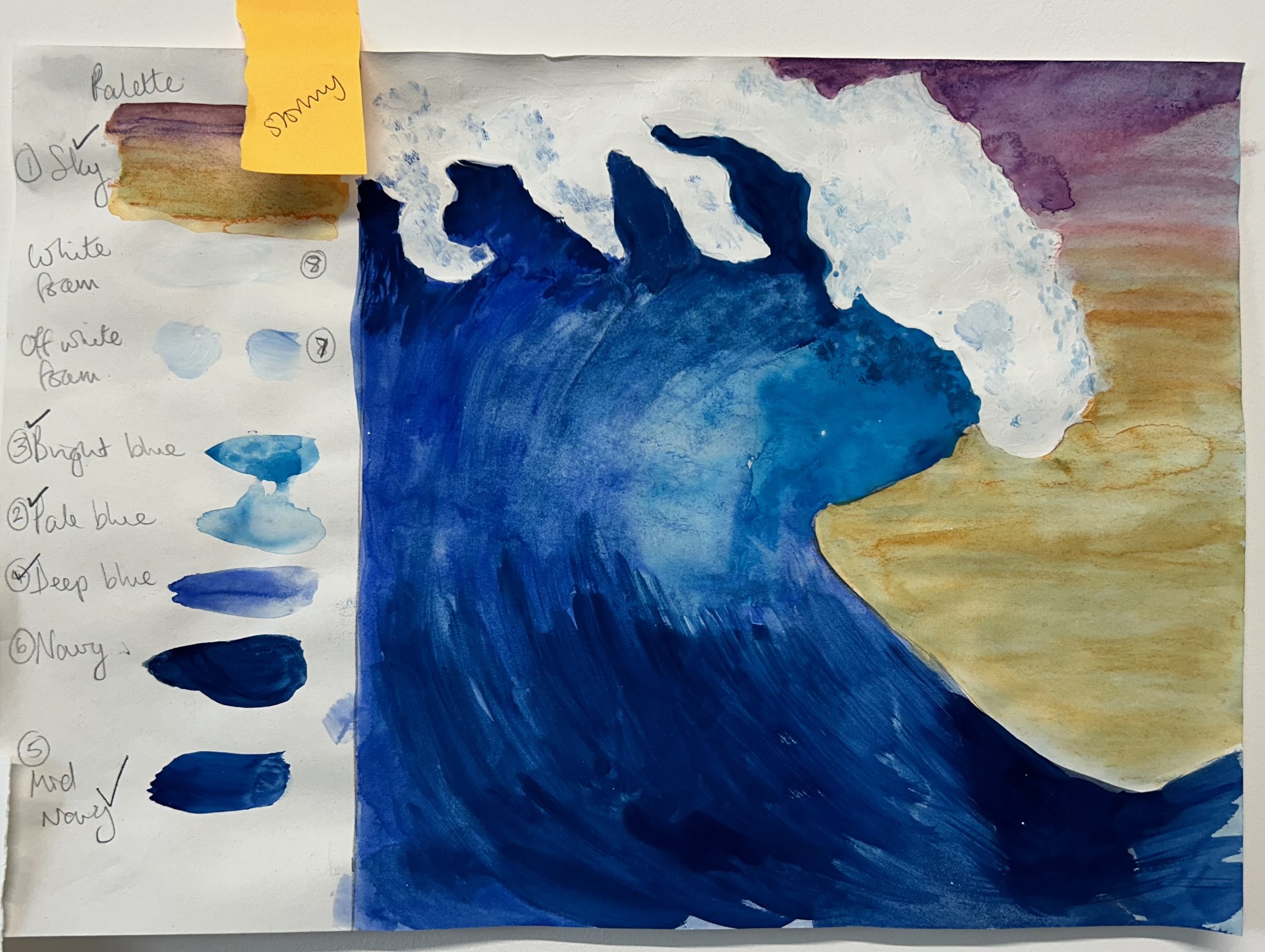Lino Printmaking: A Newcastle Printmaker’s Blog
ART COLLECTORS’ FAQS - How much does a bespoke commission cost?
The short answer is that prices vary because it is dependent on the materials and hours of labour that go into each piece. The following guidelines set out how much it costs for these specific sizes with a particular number of layers, however I can offer more tailored information for specific sizing requests.
ART COLLECTORS’ FAQS - How limited are your limited editions?
How limited are editions from The Peacock & The printmaker?
Where a print is identified as limited edition then there were between 2 and 20 made. Every product description tells you how many were printed in the edition. You can see the exact edition number in the bottom left corner of each print.
Art Collectors’ FAQs - Why did you choose Linocut?
There’s something quietly magical about carving into Lino. It’s slow, tactile, and wonderfully imperfect. Every gouge is deliberate, every mark a decision you can't undo—and I love that.
I didn’t set out to become a printmaker. But over time, I realised I was craving something more grounded—something that pulled me out of screens and into my senses. Linocut offered that pause. It invited me to work with my hands again, to make a mess, to celebrate process over perfection.
I chose linocut because it gave me space to slow down, to play with colour and form in a way that felt joyful and honest. There’s a kind of magic in peeling back that first print, not knowing exactly what you’ll get. It’s a little like life—messy, surprising, and full of happy accidents.
Now, each print I create tells a story—of a place, a memory, a dream. It’s a way of capturing joy in layers of ink and paper, and sharing a moment of stillness in a fast-moving world.
What is the difference between and off the shelf print and a bespoke commission?
Your home is more than just a space—it’s a sanctuary, a reflection of your story, your dreams, and the moments that matter most. When choosing art, you might wonder: Should I select a ready-made print, or is a bespoke commission the perfect fit? Let’s explore the difference so you can find the right piece for your haven.
What does limited edition really mean?
Well there are art reproductions and original prints.
Art Reproduction prints are created by scanning or photographing the original and digitally printing it onto paper or canvas. Sometimes these are signed and sometimes they are ‘hand finished’ with gilding or some other applied surface adornment.
Original prints and artworks created using printmaking (not involving a computer). This could be monotype, screen print, lithograph, Lino print (my specialism) or another traditional printmaking form. It involves inks being applied to one surface (the inking plate or block for example) and then transferred to the paper, fabric or other chosen final surface. These prints are usually editioned, meaning that they are numbered. This is usually in the bottom left corner of a print before the name and signature and looks like a fraction.
Tiny Seascapes – Mini Escapes for Stylish, Dreamy Interiors
Imagine coming home after a high-energy day, slipping off your heels, and letting your mind drift to the gentle rhythm of the waves...
Creating Confidence - a printmaking project funded by Arts Council England
This project aimed to make visual arts more accessible to women in deprived areas and enable them to use the creation of artworks to open up conversations about their traumas and healing process. It also aimed to enable to women to develop skills that they can apply to future employment opportunities, such as:
Cooperation
Building trust in relationships
Problem solving
Seeing a project through from inception to completion
Managing time
Pricing products
Sales
Engaging with customers
Presenting their work
Hang Your Art without the stress
There are a few different ways to hang your art but you need to pick the best one for you - your walls and your patience levels.
Command Strips
Hooks
Nails
I take you through easy steps for each.
Transforming Spaces: The Art of Crafting a Feature Wall
If you’re thinking about creating a more exciting space in your home by adding a splash of colour then I’m here to help you.
Find out how I created this feature wall and transformed a dull blank space into an interesting space where my art clients can visualise my originals in their homes.
Creating the ‘Conker Hunt’ Lino Reduction Print
Lino reduction print has become my favourite way to work over the last few years. When I explain it to people, it blows their mind how I can work this backwards process out as I go but it’s that uncertainty that is part of the appeal for me.
With this piece I really wanted to work more instinctively than I have in the past so I only traced off the sky, trunk outlines and bracken.
How (and why) to grow your email list as a Creative Business Owner
Choose a platform - It’s so easy to put together a mailing list now. I started with the free version of Mailchimp and it was a great place to start. They gave me space for up to 2000 subscribers So easy to use and I knew I was GDPR compliant.
There are loads of providers to choose from and I now pay to use Kit because of the automations and audience growth tools. My business is growing and building my email list and email funnels is a massive part of that.
Decide what your subscribers get out of it - Are you sending them inspiration? Discounts? VIP tickets? Think of 3 perks that add value and tell people about it. Remember, a lot of people will associate emails with work so what happy mail are you sending them that makes it worth their while.
Invite people - Whether it's …
How do you determine your USP as an artist or creative business owner?
A lot of creatives struggle with this because the creative community is such a supportive place that we don’t like to compare ourselves to other. What I don’t want you to do here is get into an comparisonitis cycle - this is about YOU and YOUR ART not others. It’s about what makes us uniquely us. It’s as much about us as sole traders and creators as it is about the artwork or service that we provide.
The Importance of creating a Vision for Your Artistry Business
Working on your vision isn’t just about sticking some pretty pictures on a board and daydreaming.
Getting clear on your vision is about knowing what you want to create in your business and your life.
What are you actually working for?
Your vision is your north star - the thing you’re driving towards and the beginning of knowing what action you need to take.
Work through one of these exercises so you have your vision clear in your mind…
Why you need to charge more for your art (And How to Do It)
I'm looking at you - yes you, the artist who wants to 5x their income, start charging their worth, get into more galleries and finally start living the life they’ve been dreaming of.
I know it sounds too good to be true but hear me out. I used to charge £40 for my 40cm limited edition Lino prints, now I charge a minimum of £270. So what changed?
There were a number of things - artists and collectors told me I was charging too little, I wanted to sell through galleries but I was going to be losing money and (and this is the biggest thing) I started to value what I was doing and take myself seriously as an artist.
When you want to create a sustainable art business rather than a hobby that pays for itself, you have to think seriously about the numbers. It’s no good plucking a number out of the air or simply charging what someone else does. That’s not going to ensure you cover your costs and make a decent profit. Do you think that’s what the likes of Frida Kahlo or Georgia O’Keefe would do? Hell no!
Being an artist is a ‘real job’. It can pay you a comfortable income but you have to be strategic.
Naming My Business: Where did 'The Peacock & The Printmaker' come from?
People often ask me where my business name came from. A lot of artists just use their name. I often think The Peacock & The Printmaker sounds like a fairytale - in fact one of my friends wants me to write a children’s story with that name. Maybe one day but for now I’m far too busy enjoying getting my hands covered in ink.
How it All Started…
When I first decided to put my artwork on Instagram I was terrified - it was only a hobby after all. I was terrified of people’s opinions and of what to say. I had no clue about photographing my work and it certainly wasn't meant to be a business yet.
For the sake of setting up an account I chose the handle heatherdoesprints. It was very Ronseal but that’s me really. People asked about buying my prints so I set up an Etsy shop in the same name.
Does anyone else look at the world and see colour palettes?
When I was little, I assumed that everyone looked at the world the way I did. I look at a scene and I see a colour palette - turns out not many people do.
I guess that's why I love to break down my sketches into palettes for the layers in my prints - it just makes sense to me.
The main difference between what I see and what I print IS the colours though. It's like I'm turning up the vibrancy filter in my brain as I'm looking at the sea and then putting that onto paper. There is a reason I do that though...
I'm a big believer that colour has a MASSIVE impact on our mood. Take Seasonal Affective Disorder for example - it's thought that the reduced sunlight in autumn and winter causes a reduction in melatonin production. Low sun = low mood and that's how I feel when I'm in a place that lacks colour. The shops in winter bring me down with their dark colours and I am not into muted tones and minimalist white box houses (if that's what you're here for you're in the wrong place, ha ha).
Being a printmaker for the week: Emma’s diary of work experience at The Peacock & The Printmaker Studio
Hello my name is Emma, I am 15 years old and I have always loved drawing and being creative. I was in the studio of The Peacock and The Printmaker because I wanted to learn the lifestyle and different aspects of being an artist using this as a way to figure out what it means to be an artist.
My Long Term Relationship with The Coast
From an early age, I have enjoyed the great British seaside - earlier than I thought in fact.
I asked my mum for some childhood beach photos and one of them was this one of my looking awesome in dungarees and red sunnies. Apparently we were in Devon - I had no idea I even been there - and my toothy grin says it all really. What’s not to love about bare feet in the wet sand seeing parents building sandcastles and getting to knock them down?
I remember a trip to King Edward Bay in Tynemouth with my daughter at a similar age. It’s a pretty similar image except she was more adventurous and decided to sample the sand as food. Luckily the north east is home to some of the cleanest beaches in the UK.
We lived in the North West of England so most of our holidays were either in North Wales or The Lake District.
Things that are harming your art business (and what to do instead)
Nobody starts an art business because they want to spend their life in front of a computer, right? We want to have lots of time to create but there are other tasks that we have to do in order for our clients to be able to see the work so that they can buy it. Having said that, it’s really easy to fall into the trap of doing loads of admin in order to feel like you’re being effective (I am guilty of this). So in order to save you time and stress, I’m Heather Moore, owner of The Peacock & The Printmaker. I have been selling my art for 7 years and have put together a list of things NOT TO DO so that you have more time for the art and the essential biz jobs.
An Artist/Parent’s Guide to Getting Your Sh*t Together in the Summer Holidays So You Can Actually Enjoy Time with Your Family
Are you an artist who’s also a parent and worrying about how you’ll keep the business ticking over the holidays?
Here are some tips to help keep your business going without feeling like you’re missing out on time with your kids or like you’re going to drop all the plates.
1. Plan ahead! When can you work? What are your priorities?
2. Be kind to yourself - plan in little pockets of relaxation, ask for help and be prepared to let some things go. The business is there to support your chosen lifestyle.
3. Be realistic - what can you actually manage? If time is not available then posting daily to socials and running workshops is not going to work.
4. Recycle - got reels and carousels that have done well before? Repost them with new captions. Chances are, a lot of your audience didn’t see them anyway.
5. Cheat - use apps like CapCut to create quick reels

